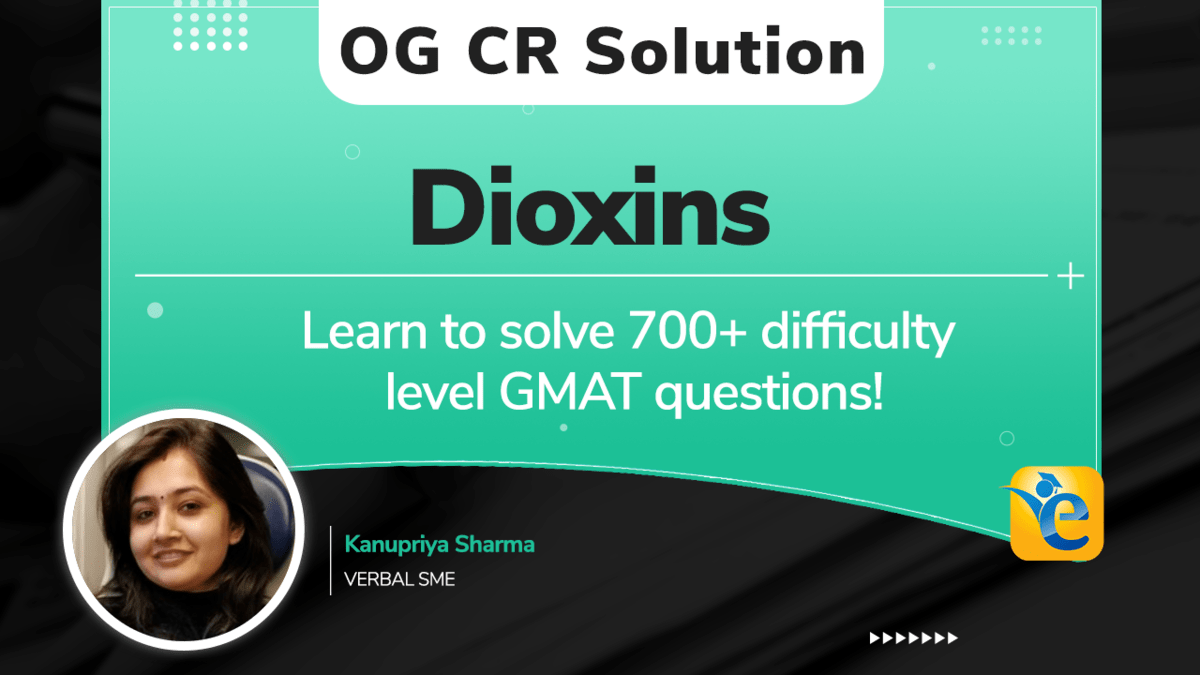In this article, we’ll look at the solution to this Official Guide (OG) question CR53140.01 – “In a certain rural area, people normally dispose…” on Critical Reasoning:
In a certain rural area, people normally dispose of household garbage by burning it. Burning household garbage releases toxic chemicals known as dioxins. New conservation regulations will require a major reduction in packaging—specifically, paper and cardboard packaging—for products sold in the area. Since such packaging materials contain dioxins, one result of the implementation of the new regulations will surely be a reduction in dioxin pollution in the area.
Which of the following, if true, most seriously weakens the argument?[Refer to GMAT Official Guide for options]
Here is some general information about this OG question:
- PQID: CR53140.01
- Difficulty Level: Hard
- Most Common Incorrect option choice: Choice B and Choice C
- Question Type: Weaken
OG Video Solution – CR53140.01 – In a certain rural area, people normally dispose…| “Dioxin pollution”
OG Solution – CR53140.01 – In a certain rural area, people normally dispose…| “Dioxin pollution”
Hi Student, if you too marked choice B as the correct answer or found it difficult to eliminate it, then you are not alone. Approximately 28% of students who attempt this question go with choice B- the most popular incorrect choice. However, choice B is not the only culprit; choice A contributes significantly towards making this question difficult. Let’s see how.
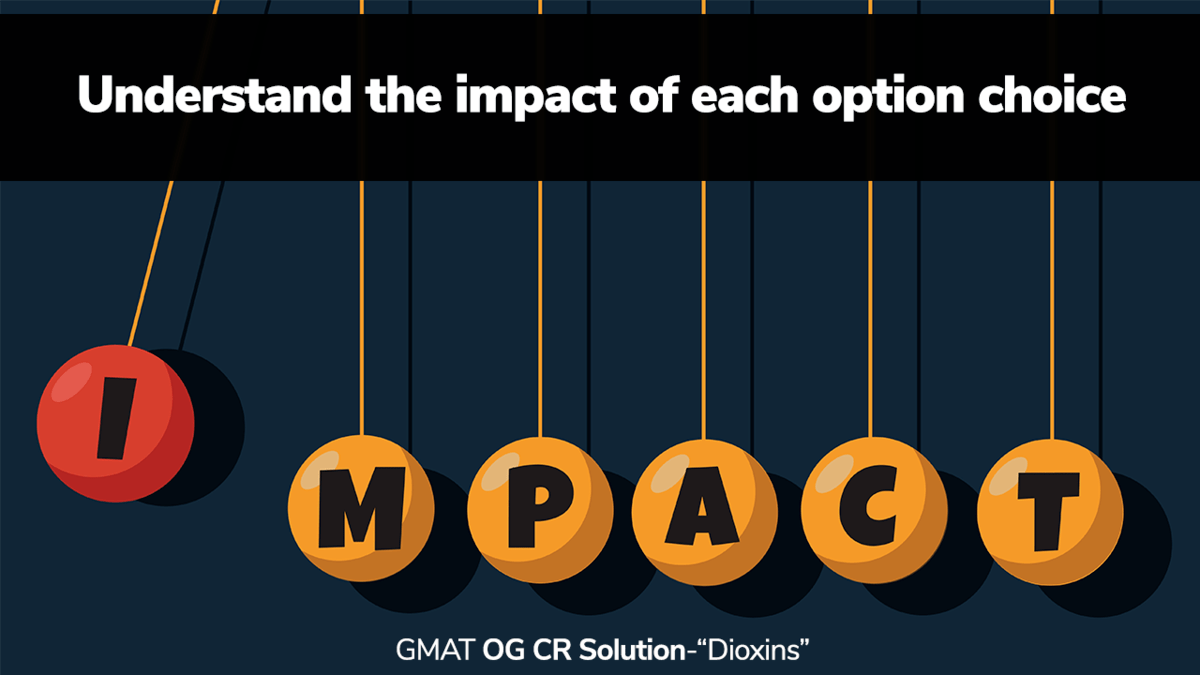
Why do many students reject Choice A?
1. Choice A is difficult to understand
The first reason here is that the way choice A has been worded, it is difficult to understand. If you too felt the same then here is what you should do for such a statement – break it down.
As we discuss in our Master Comprehension course, complex sentences should be read in smaller chunks. Let’s apply the same on choice A-
- Garbage containing large quantities of paper and cardboard
So, we are talking about garbage that has a lot of paper and cardboard. Hence, choice A is about this specific type of garbage.
- can easily burn hot enough
This kind of garbage can get heated enough for something. We will have to read further to understand what this “something” is.
- for some portion of the dioxins that it contains to be destroyed.
This heat is sufficient to destroy a portion of the dioxins contained in this garbage.
So, choice A states that when garbage that has a lot of paper and cardboard is burnt, it can get hot enough to destroy some of its own dioxins.
Wait! Is choice A conveying a benefit of burning garbage that has a lot of paper and cardboard? Yes, you are right! So, it is a contender for weakener.
You can see how easy it was to connect choice A with the passage once we understood it correctly.
2. Choice A may not always break the conclusion
If you too rejected choice A thinking that dioxins released after “some portion of the dioxins has been destroyed” in choice A may be more than dioxins that would be released if the plan is implemented and hence choice A is incorrect, then you are missing out on an important characteristic of a weakener.
A correct weakener just needs to reduce our belief in the conclusion. It just needs to provide information that can help us question the conclusion. It need not always break the conclusion.
Let’s take an example. If you are given that:
- Joe studies for GMAT 8 hours a day. Hence, he will score more than 720 on his GMAT.
Then a statement such as
- Only 10% of the students studying for GMAT 8 hours a day score more than 710.
will make you question the conclusion. Please note that the conclusion does not necessarily break- Joe may still score 740 on his GMAT, but this statement reduces our belief in the conclusion and, hence it is a weakener.
Similarly, choice A conveys that it is good to burn garbage with a lot of paper and cardboard since a portion of dioxins gets destroyed in this process. It makes us question whether it is correct to conclude that the implementation of the new regulations will surely reduce dioxin pollution in the area.
Hence, it is a correct weakener.
Importance of “Some” in Choice A
“Some” plays a crucial role in choice A. By definition, “some” refers to the range 1-All. Hence, some portion can mean 1%, 10%, 25%, 50%, 70%, or anything up to 100%.
Therefore, as per choice A, garbage containing a lot of paper and cardboard, when burnt, can destroy anywhere between 1 and 100% of dioxins contained. So, it is possible that burning the garbage with lots of paper and cardboard is more beneficial compared to burning the garbage without paper and cardboard.
Let’s take an example to understand it.
Let’s assume these values:
- Dioxin content in original garbage with a lot of packaging material = 100 units
- Dioxin content destroyed if original garbage is burnt = 60 units
- Dioxin pollution in this case = 40 units
Now, post-implementation of new regulations, if the dioxin content of garbage without packaging material is 50 units, then this implementation would actually increase dioxin pollution from 40 units to 50 units.
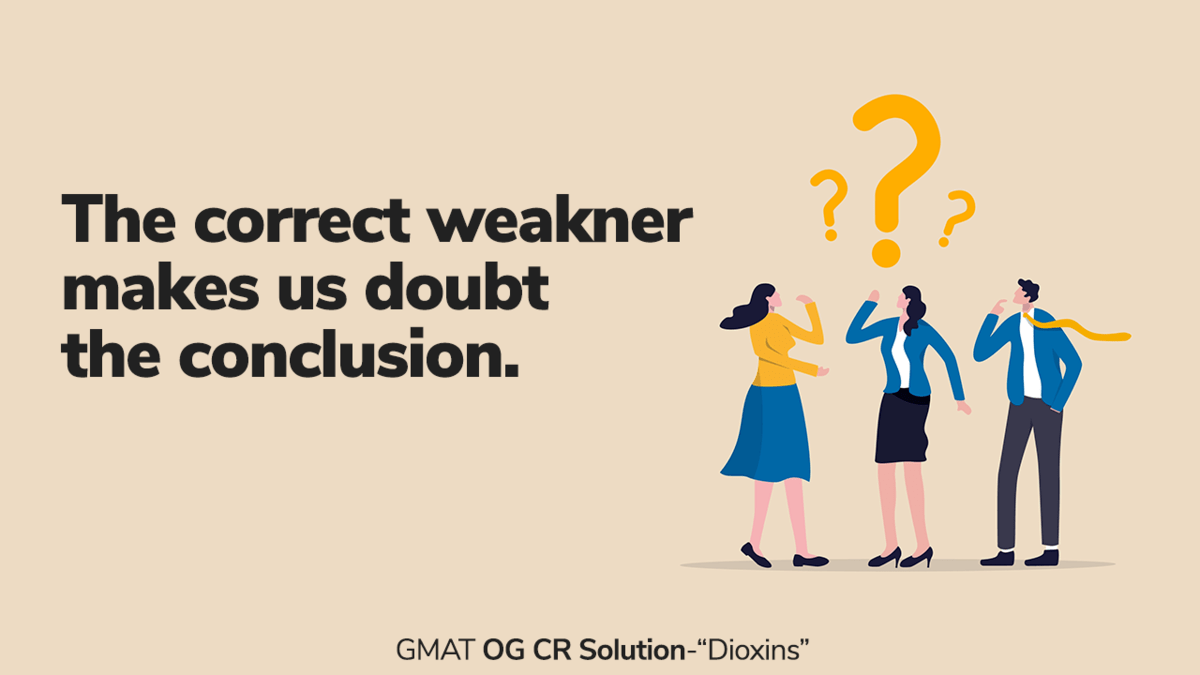
Hence, choice A definitely makes us doubt the conclusion and therefore is the correct choice.
Why is Choice B incorrect?
Most of the students who select choice B do so because they do not understand it correctly. Choice B is a very interesting choice that, if not read carefully, seems to convey that packaging materials are not a major constituent of household garbage. Students simply conclude that removing the packaging material from garbage will not have any significant impact, and so choice B seems to be the correct choice.
If you did the same, then you faltered at multiple points. Let’s discuss.
1. Meaning of choice B
Let’s again break down choice B to understand it better.
- Packaging materials typically make up only a small proportion of the weight of household garbage,
In terms of weight, packaging materials constitute a small portion. So, maybe in 10kg of household garbage, only 2kgs (20%) will be packaging material, and the remaining 8kgs (80%) will be other waste.
- but a relatively large proportion of its volume.
However, the volume occupied by packaging material will be relatively higher. So, in the example given above, while packaging material is only 20% in weight, it may be taking up 40% of the volume.
All we get to know from choice B is that packing material is one of the lighter-density components of household garbage. But can we relate density to dioxin content? Clearly No.

Hence, choice B cannot be used to weaken the conclusion.
2. Understanding The Conclusion
Let me ask you a question-
If I rewrite choice B as- Packaging materials typically make up only a small proportion of the household garbage.
Will it be correct?
If you think yes, then you will learn another important aspect that needs to be considered here.
If packaging material constitutes a small proportion, then probably the dioxin pollution caused by it will also be less, let’s assume 5%.
So, if new regulations are implemented, dioxin pollution will reduce by only 5%.
Does our belief in the conclusion reduce because the reduction is small and not significant?- No.
The conclusion talks about a reduction in dioxin pollution and not a significant reduction in dioxin pollution.
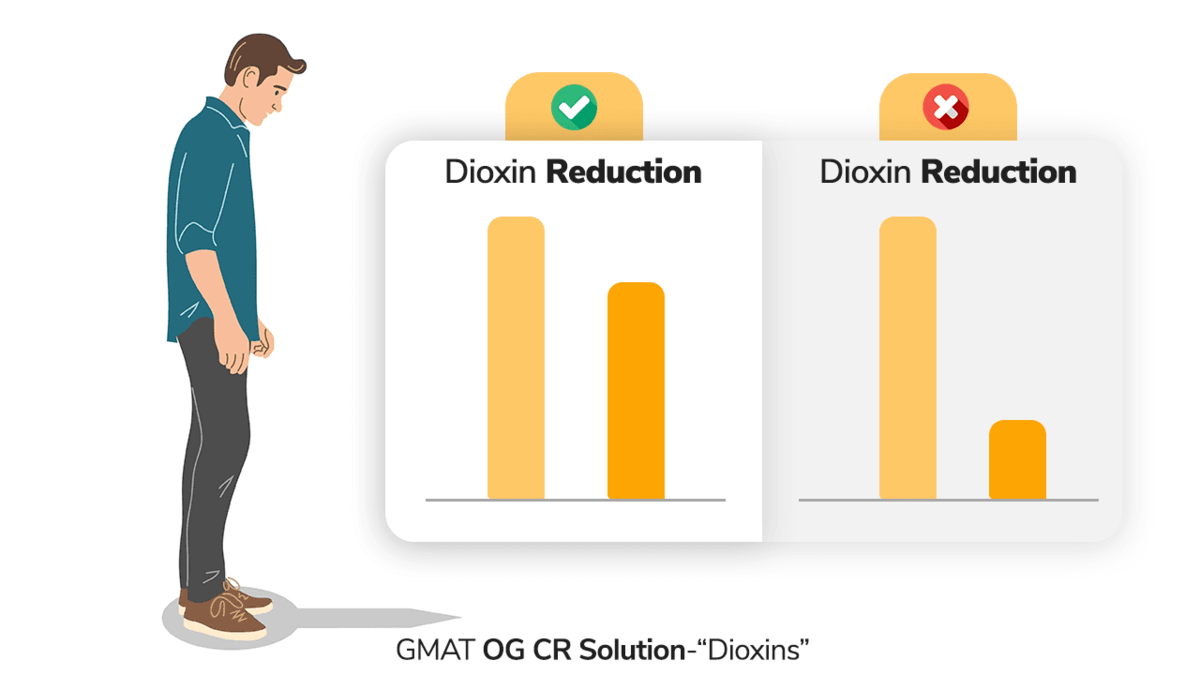
Hence, even if packaging material constitutes a small percentage of household garbage, new regulations will definitely help reduce some of the dioxin pollution.
Therefore, even modified choice B does not go against the conclusion.
The same holds true for the original choice B. Given the properties of packaging material in choice B, removal of packing material from garbage will definitely remove some dioxin content. Hence, original choice B also does not go against the conclusion.
Let’s quickly reject other answer choices too.
Choice C- Choice C conveys that the amount of packaging material in rural areas is expected to be less than that in urban areas. However, this information does not impact the conclusion since the conclusion is about the impact of new regulations on dioxin pollution in rural areas. This choice does not provide any information to understand this impact. Also, the comparison between rural and urban areas is irrelevant. Hence this choice is incorrect.
Choice D- The motivation behind the new regulations does not help us understand the impact of these regulations, and hence this choice is incorrect.
Choice E- The conclusion is about the impact of new regulations on dioxin pollution. The after-effects of dioxin pollution are irrelevant.
Takeaways – In a certain rural area, people normally dispose…
- Always read complex answer choices in small chunks and assimilate the meaning.
- A correct weakener need not always break the conclusion. It just needs to reduce our belief in the question.
- Use example values where applicable to understand the given information correctly.
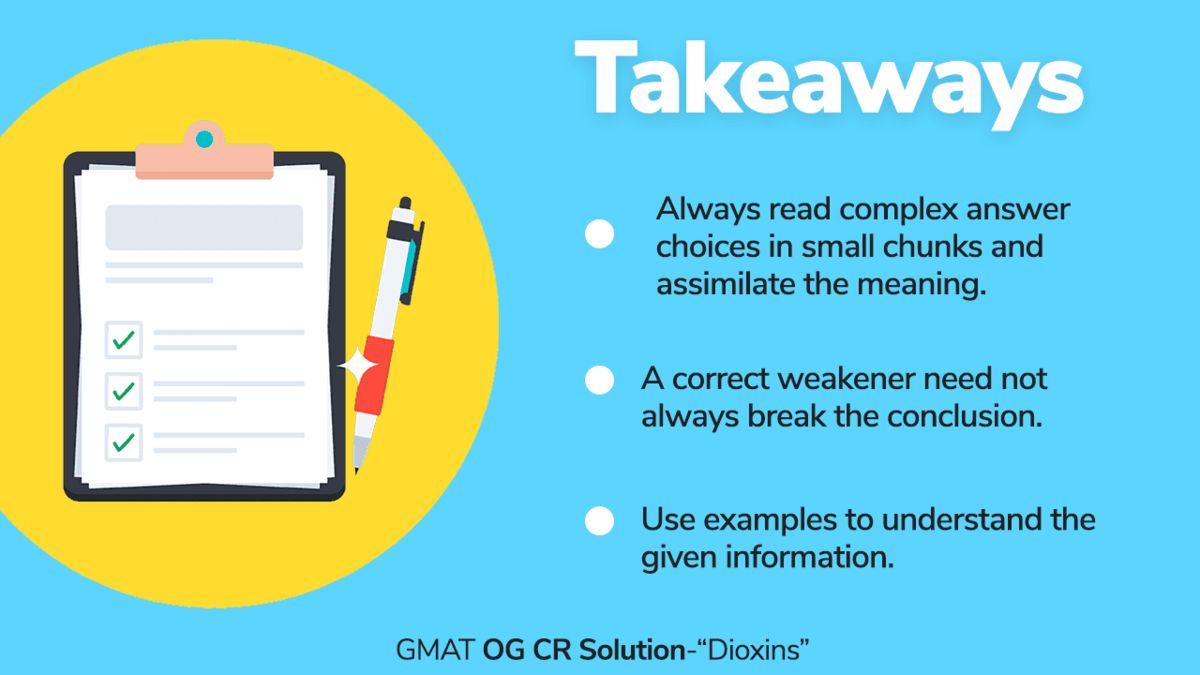
If you want to try a similar question that tests your understanding of weakener, click here. Make sure to apply learnings from this question in the next question.
Happy learning!
Kanupriya
Planning to take the GMAT? We can give you access to quality online content to prepare. We are the most reviewed GMAT prep company on the GMAT club with more than 2200+ reviews and have delivered 10x 700+ scores than the average GMATClub partner. Why don’t you take a free trial and judge it for yourself? Write to us at acethegmat@e-gmat.com in case of any queries.


